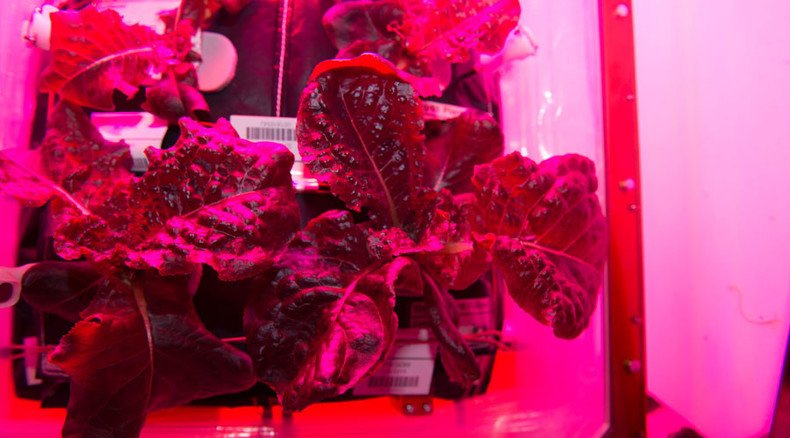Space salad: ISS astronauts to eat first cosmic lettuce

The astronauts on board of the International Space Station (ISS) are set to try the first-ever space-grown food. Red romaine lettuce grown at the Veggie plant system at the final frontier is on the menu.
The lettuce has already been tested for microbiological safety, and will be cleaned with citric acid sanitizers.
It’s not clear how the salad will be prepared: it could be a kind of space salad, or accompany the usual dehydrated space meal.
Half of the harvest is to be sent to Earth for examination.
Tomorrow we'll eat the anticipated veggie harvest on @space_station! But first, lettuce take a #selfie. #YearInSpacepic.twitter.com/fUKQMhEDjK
— Scott Kelly (@StationCDRKelly) August 9, 2015The Veggie technology will be important on long-haul flights in the future: not only does it provide fresh vegetables, but also has a psychological means of de-stressing for astronauts who take great pleasure in gardening.
“There is evidence that supports fresh foods, such as tomatoes, blueberries and red lettuce, are a good source of antioxidants. Having fresh food like these available in space could have a positive impact on people’s moods and also could provide some protection against radiation in space,” Dr. Ray Wheeler, the project’s lead researcher, said, as quoted in NASA’s press release.
Last but not least: the breakthrough technology could help agricultural facilities with artificial light, and in places where water is scarce, like the Middle East.
The mission started in May, when the plant roots were first watered. These were transferred to Earth after 33 days of growing in space.
Another batch of seeds was planted in July, after being kept at the ISS for over a year.
The Veggie plant growth system was developed by Orbital Technologies Corp (Orbitec) in Madison, Wisconsin, and delivered to the ISS in April 2014.
It consists of red and blue lights that are more efficient in stimulating plant growth.
Green LEDs were added, too, to make plants green in color, and not purple as they would be if only red and blue LEDs had been used.
"Blue and red wavelengths are the minimum needed to get good plant growth," Wheeler said in the NASA statement.
And while their US colleagues eat the first space salad, two Russian crew members - Expedition 44 Commander Gennady Padalka and Flight Engineer Mikhail Kornienko – will don their space suits and set out for a six-hour spacewalk.
The main aim of the walk will be to rig new equipment on the Russian segment of the ISS, and take pictures outside the station. The team will also clean the illuminators of the Zvezda service module.
Padalka, 57, has spent over 800 days in space, more than anyone in history.












